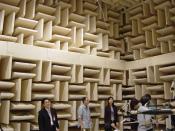�PAGE � �PAGE �15� Creative and innovative practices
Running Head: Creative and innovative practices at IBM
Creative and innovative practices at IBM
[Name of the student]
[Name of the institute]
�
Creative and innovative practices at IBM
Literature review
Scholars generally agree that there are two broad types of change. One is incremental change, or improvement that takes place within already accepted frameworks, value systems, or organizational deep structures, and the other is fundamental change in frameworks, value systems, or deep structure itself. These types of change have been variously called first-versus second-order change; alpha versus beta change; and evolutionary or incremental change versus revolutionary reorientation. A similar distinction is made by scholars of action science who focus on interventions aimed at fostering individual learning and interpersonal effectiveness.
They argue that such individual learning will ultimately serve as the primary basis for organizational learning and transformation. Double-loop learning refers to changes in the governing values or assumptions themselves, which ultimately lead to changes in action.
Nielsen (1996) has further expanded Argyris' action-science framework by introducing another dimension, triple-loop action learning. In Nielsen's (1996) formulation, triple-loop learning addresses not only instrumental actions (single-loop) and driving values (double-loop) but also possible errors embedded in tradition systems (triple-loop), which shape and constrain individual values and assumptions.
Single-loop learning or incremental solutions are effective ways to solve problems, because they produce favorable outcomes for individuals and organizations within a relatively short period of time (e.g., Nielsen, 1996). However, a more fundamental change is often necessary for survival and long-term effectiveness when inadequate mental frameworks, governing values, deep structures, or tradition systems themselves are the main source of problems (Bartunek, 1993; Gersick, 1991; Fisher, Rooke, & Torbert, 2000; Tushman & Romanelli, 1985). In these cases, small changes or incremental solutions do not work and...


